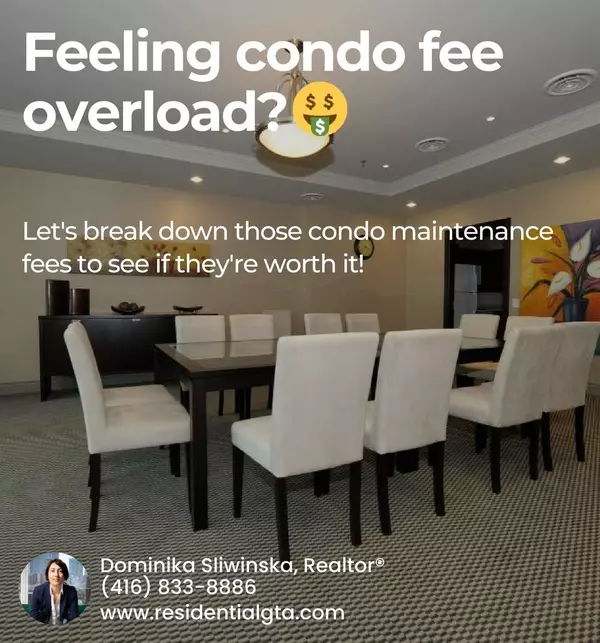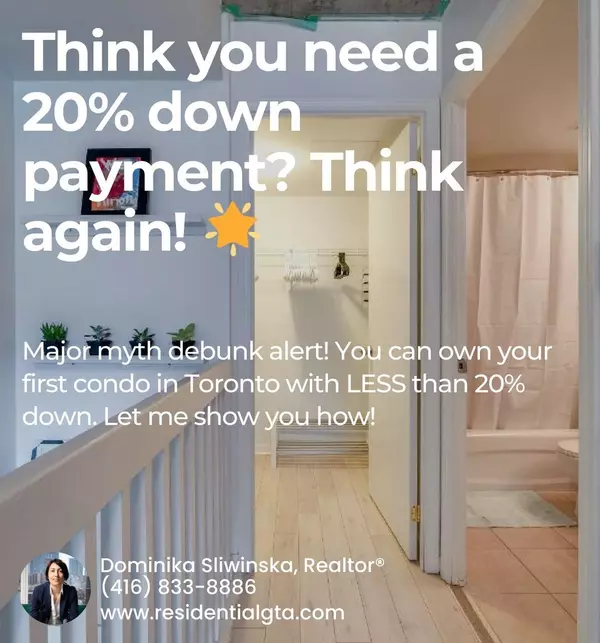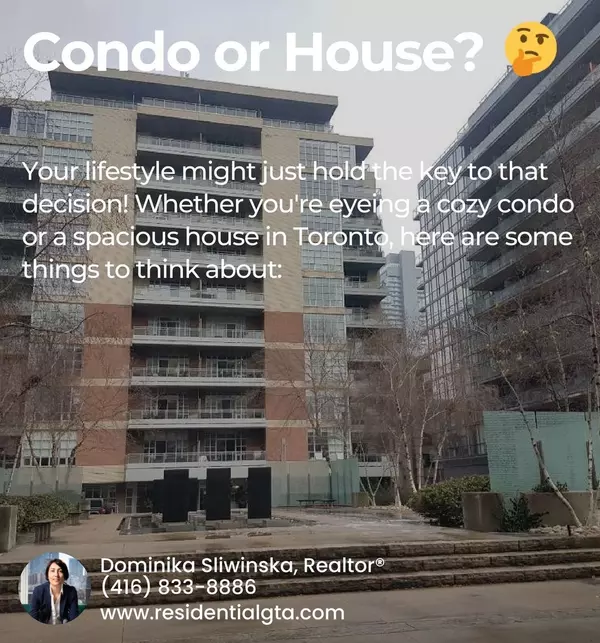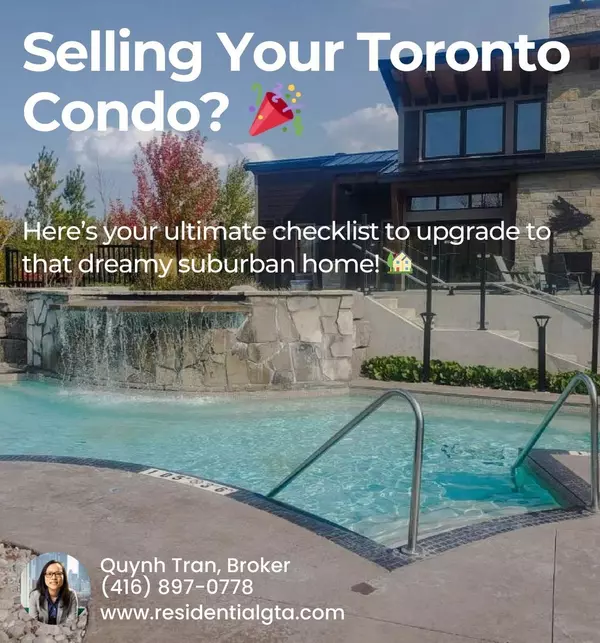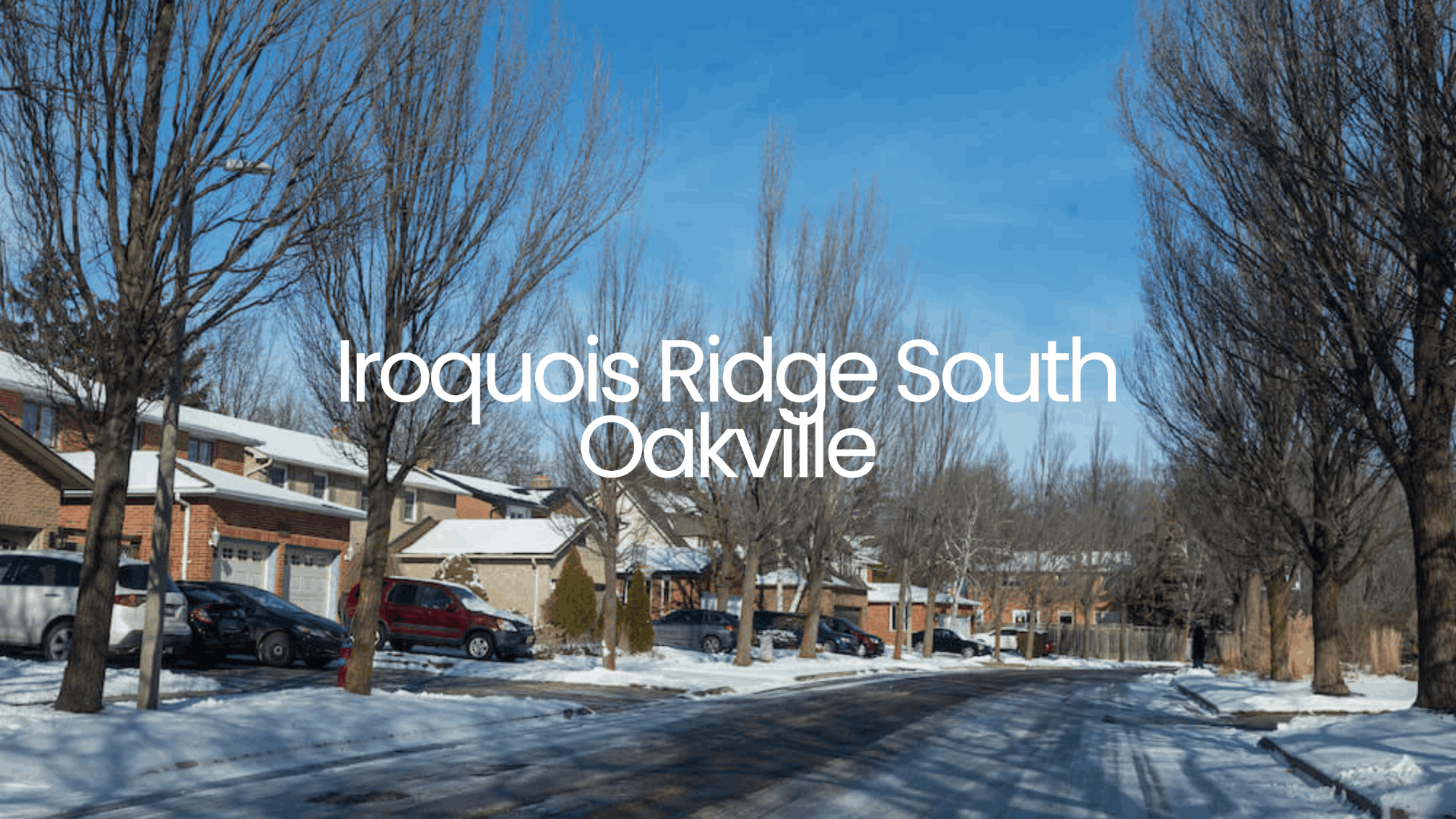
How to Find Hidden Gems: Affordable Condo Options in Expensive Neighborhoods
In the bustling city of Toronto, finding an affordable condo in an expensive neighborhood can seem like an impossible task. Many budget-conscious renters dream of owning a home while staying close to the amenities and vibrancy of the city's high-cost areas. This blog will walk you through proven strategies to uncover those hidden gem condos that won't break the bank. Unlocking Value: Proven Strategies for Finding Affordable Condos in High-Cost Areas 1. Research Up-and-Coming Areas Identifying neighborhoods that are on the cusp of growth can provide affordable options before prices skyrocket. Look for areas undergoing revitalization projects or those with planned infrastructure improvements, such as new transit routes or community centers. - Example: If a new subway line is being built near a lesser-known neighborhood, prices will likely rise once it's complete. Research these developments ahead of time. 2. Explore Smaller Building Projects Large condo developments often come with higher price tags due to their extensive amenities and marketing costs. Smaller buildings or low-rise developments may offer more budget-friendly units without sacrificing location. - Action Step: Prioritize touring boutique condo buildings. These projects may lack extensive amenities but can provide a more affordable entry point into a desirable neighborhood. 3. Consider Older Buildings Newer buildings often come with premium pricing. Older condos may be more affordable, and with a bit of renovation, they can become cozy and modern homes. - Example: A 20-year-old building may not have the latest finishes, but the units are often larger and more reasonably priced. Plan a budget for renovations. 4. Seek Out Off-Market Listings Not all condos are listed on popular real estate websites. Some owners prefer to sell their properties quietly. Off-market listings can be less competitive, allowing you to negotiate better terms. - Action Step: Network with real estate agents who have access to these exclusive listings or consider joining local real estate groups and forums where such properties are discussed. 5. Leverage Government Programs and Incentives Several government programs and incentives are designed to help first-time homebuyers. These can significantly reduce the upfront cost and make owning a condo in an expensive area more accessible. - Example: The First-Time Home Buyer Incentive from the Canadian Government can offer shared equity in the property, lowering the initial financial burden. 6. Focus on Amenities and Lifestyle Needs Prioritize your must-haves versus nice-to-haves. Compromising on less critical amenities can open up more affordable options within desirable areas. - Example: If proximity to public transport is non-negotiable, prioritize that over luxury amenities like a rooftop pool or dedicated parking space. 7. Conduct Thorough Market Research Understanding the market trends helps in identifying the right time to buy. Prices fluctuate, and seasons affect the real estate market. Analyzing when the market slows down can unveil hidden gems. - Action Step: Track pricing trends by monitoring real estate listings, attending open houses, and consulting market reports. Winter months often see less competition, potentially leading to better deals. 8. Partner with a Local Real Estate Expert A local real estate agent specializes in the neighborhoods you're interested in and can provide insider knowledge, tips, and more personalized service. They can help navigate the complexities of the real estate market. - Example: An agent with experience in Toronto's high-cost areas might know about condos that are priced under market value due to unique seller circumstances. 9. Use Technology and Real Estate Apps Real estate apps can alert you instantly when new listings that fit your criteria become available. Many apps also offer market data and property histories that can be helpful in making informed decisions. - Action Step: Set up alerts on real estate apps like Zillow or Realtor.ca for specific neighborhoods. This will ensure you don’t miss new listings that might be affordable options. 10. Be Prepared to Act Quickly In competitive markets, being prepared to make quick decisions can make all the difference. Ensure your finances are in order, with mortgage pre-approval, and be ready to make an offer when you find that hidden gem. - Action Step: Keep all necessary documentation up-to-date. Staying prepared with a pre-approval will enable you to act swiftly when the right condo becomes available. Real-World Application Let's take an example of Jane, a budget-conscious renter in Toronto. She followed these strategies and discovered a 15-year-old condo in a neighborhood undergoing revitalization. The building didn't have extensive amenities, but it was within her budget. Through an off-market listing, her real estate agent helped her purchase the condo at a price much lower than similar units in the area. Jane used the First-Time Home Buyer Incentive, further reducing her costs, and was able to renovate the condo modestly to meet her needs. Conclusion Finding an affordable condo in an expensive neighborhood is challenging but not impossible. By focusing on up-and-coming areas, considering older and smaller properties, leveraging government programs, and partnering with local experts, you can uncover hidden gems that fit your budget. Always conduct thorough market research and be prepared to act quickly when opportunities arise. With these strategies, owning your dream home in Toronto's vibrant neighborhoods is within reach.

How to Save for a Downpayment: The Ultimate Step-by-Step Guide
Buying your first home or condo in Toronto can be both exciting and challenging, especially if you are on a budget. The biggest hurdle often is saving for that downpayment. Don't worry. Here's an ultimate guide to help you save up for your dream home with useful and doable strategies. Let's dive into it! Unlock Hidden Savings: 10 Creative Ways to Cut Costs and Boost Your Downpayment Fund 1. Track Your Spending The first step is knowing where your money is going. Write down every expense, no matter how small, for a month. Use apps like Mint or YNAB (You Need A Budget) to help you keep track. By understanding your spending habits, you can identify areas where you can cut back. 2. Create a Budget Once you know your spending habits, creating a budget becomes easier. Allocate a specific amount to different categories like rent, groceries, utilities, and entertainment. Stick to this budget religiously. This discipline will help you avoid unnecessary expenditures and save more. 3. Cut Unnecessary Subscriptions Look through your monthly subscriptions. Consider canceling memberships and services you rarely use. Do you really need that gym membership when there are free workout videos online? Are you watching all those streaming services? Cutting down can save you a substantial amount. 4. Cook at Home Eating out or ordering takeout can drain your budget quickly. Try cooking meals at home. Plan your weekly menu, shop for groceries with a list, and prepare meals in bulk to save both money and time. Websites and apps like Mealime can give you meal-prep ideas that fit your budget. 5. Use Public Transportation Owning and maintaining a car in Toronto can be expensive. Insurance, gas, and parking costs add up. If possible, use public transportation. The Toronto Transit Commission (TTC) covers most areas in the city, and a monthly pass is much cheaper than car-related expenses. 6. Get a Side Gig Consider taking up a part-time job or freelance work to increase your income. Platforms like Upwork, Fiverr, or even part-time retail jobs can provide additional funds that can go directly into your downpayment savings. 7. Sell Unneeded Items Look around your home for items you no longer need or use. Sell these items online through platforms like Kijiji, Facebook Marketplace, or eBay. Not only will you declutter your home, but you'll also pocket some extra cash. 8. Automate Savings Set up a separate savings account specifically for your downpayment. Automate a portion of your income to be transferred into this account each month. This way, saving becomes a regular habit, and you won’t be tempted to spend it elsewhere. 9. Cut Utility Costs Simple changes in your utility usage can lead to significant savings. Switch to energy-efficient bulbs, unplug devices when not in use, and reduce your heating and cooling costs by adjusting the thermostat. Over time, these small changes can add up. 10. Shop Smart Always look for deals and discounts when shopping. Use apps like Flipp to find grocery store deals. Buy in bulk for non-perishable items. Shopping during sales or using coupons can save you a considerable amount each month. Avoid impulse buys by sticking to a shopping list. Practical Tips for Implementing Your Savings Plan 1. Set Clear Goals Write down how much you need for the downpayment and by when. Break this goal into smaller monthly savings targets. Having clear goals makes it easier to stay focused and motivated. 2. Monitor Your Progress Regularly check how much you've saved and adjust your budget if necessary. Celebrate small milestones. This will keep your motivation high and your spirits up as you move closer to your ultimate goal. 3. Stay Disciplined Avoid dipping into your downpayment fund for non-emergencies. Remember why you’re saving and stay committed. Discipline is key to reaching your savings goal. 4. Utilize Employer Benefits If your employer offers benefits like bonuses, stock options, or a matching savings plan, make the most of them. Direct any extra income from these sources into your downpayment savings account. 5. Seek Professional Advice If you’re struggling to manage your finances or save effectively, consider seeking advice from a financial advisor. They can provide you with professional guidance tailored to your specific situation. 6. Consider Government Programs In Toronto, there are several programs designed to help first-time homebuyers. Look into the First-Time Home Buyer Incentive, Home Buyers' Plan (HBP), and the Land Transfer Tax Refund for First-Time Homebuyers. These can offer significant financial support. Conclusion Saving for a downpayment on your first home or condo in Toronto requires dedication, discipline, and smart financial planning. By tracking your spending, creating a budget, and cutting unnecessary expenses, you can gradually build a substantial downpayment fund. Implementing practical savings tips and seeking professional advice can further accelerate your journey towards homeownership. With the right approach and persistent effort, turning the dream of owning a home into reality is entirely achievable, even for budget-conscious renters. Keep pushing forward, stay focused, and soon you’ll be holding the keys to your own home.

Property Tax 101: A Simple Guide to What Condo Buyers Should Expect
What Every First-Time Condo Buyer Needs to Know About Property Tax Buying a condo in Toronto can be an exciting experience, especially for first-time buyers. However, understanding property tax is crucial to avoid unexpected costs. Here’s a simple guide to help you. What is Property Tax? Property tax is a tax homeowners pay to the city based on the value of their property. The money collected is used for public services like schools, roads, and emergency services. How is Property Tax Calculated? In Toronto, property tax is calculated by multiplying your condo's assessed value by the tax rate. The assessed value is determined by the Municipal Property Assessment Corporation (MPAC) and is usually updated every four years. Formula:\[ \text{Property Tax} = \text{Assessed Value} \times \text{Tax Rate} \] For example, if your condo is assessed at $500,000 and the tax rate is 0.61%, your annual property tax would be: \[ \$500,000 \times 0.61\% = \$3,050 \] Factors Affecting Property Tax 1. Assessed Value: Higher the value of your condo, higher the tax.2. Tax Rate: Varies by municipality and can change yearly.3. Location: Different areas may have different tax rates.4. Home Improvements: Major renovations can increase your property's assessed value. Common Misconceptions About Property Tax "Property Tax is the Same Everywhere in Toronto" This is not true. Tax rates can differ from one neighborhood to another, and even from one type of property to another. "First-Time Buyers Get a Tax Break" Unfortunately, Toronto does not offer a property tax break specifically for first-time condo buyers. How to Find Your Condo’s Assessed Value You can find your condo’s assessed value through the following: 1. MPAC Website: Enter your address to get the current assessed value.2. Property Tax Bill: Each year, you’ll receive a property tax bill that includes the assessed value.3. Realtor: Ask your real estate agent for an estimate based on recent sales of similar condos. Understanding the Tax Bill Your property tax bill will usually include: - Assessed Value: The value of your condo as determined by MPAC.- Tax Rate: The percentage used to calculate your tax.- Total Tax Amount: The total amount you owe for the year.- Due Dates: When you need to pay the tax. Paying Your Property Tax Options 1. Lump Sum Payment: Pay the full amount at once.2. Installments: Spread out payments over the year. You can usually pay online, by mail, or in person at the city’s tax office. Late Payments Be aware that late payments often come with penalties and interest, which can add up. Getting Help with Your Property Tax If you’re struggling to pay your property tax, there are a few options to consider: 1. Tax Relief Programs: Some municipalities offer programs to help low-income homeowners.2. Payment Plans: Contact the city to see if you can arrange a more manageable payment plan.3. Professional Help: Consider talking to a financial advisor or real estate expert for personalized advice. Reducing Your Property Tax While you can’t directly lower your property tax, you can challenge the assessed value if you believe it’s too high. Here’s how: 1. Review Your Property Assessment Notice: Check the details and compare with similar properties.2. Gather Evidence: Take notes, photos, and find comparable sales.3. File an Appeal: Submit your evidence and appeal through the MPAC website or by mail. Examples of Property Tax Calculation Let’s look at two examples to really understand how property tax works. Example 1: Condo in Downtown Toronto - Assessed Value: $700,000- Tax Rate: 0.61%- Annual Property Tax: \[ \$700,000 \times 0.61\% = \$4,270 \] Example 2: Condo in a Suburban Area - Assessed Value: $500,000- Tax Rate: 0.55%- Annual Property Tax: \[ \$500,000 \times 0.55\% = \$2,750 \] You can see how the location and the tax rate directly impact the property tax amount. Final Thoughts Understanding property tax is essential when buying a condo in Toronto. By knowing how it’s calculated, checking your assessed value, and keeping an eye on your property tax bill, you can avoid surprises and be better prepared. If you’re ever unsure, don’t hesitate to seek professional advice. Buying a home is a big step, and being prepared for all financial aspects, including property tax, will make the process smoother and more enjoyable. Happy condo hunting!
Categories
Recent Posts


